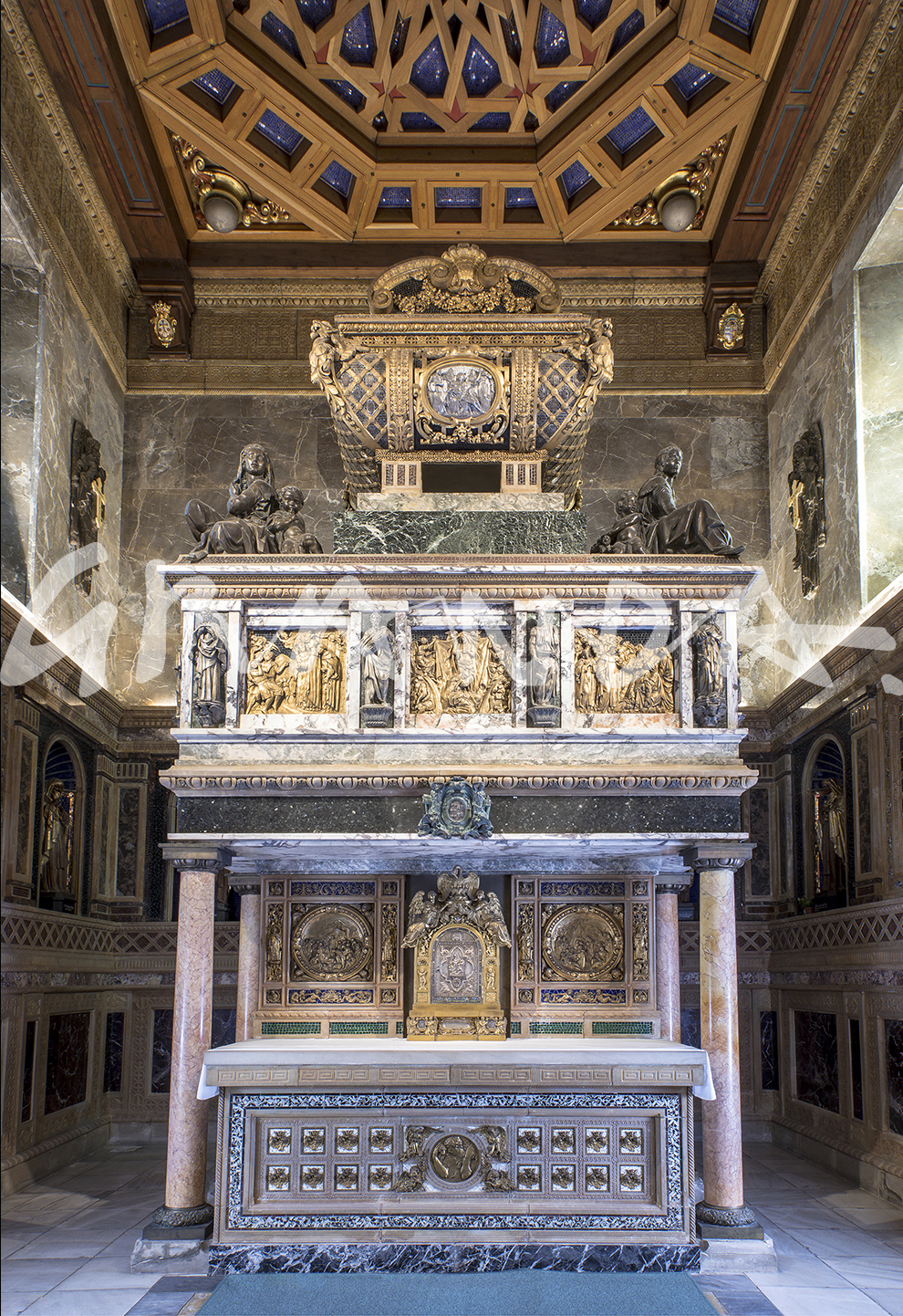
The Church celebrates today the feast of St. John of the Cross, the mystical reformer of Carmel, who died on December 14, 1591 and was canonized on December 27, 1726. His remains rest in the convent of the Discalced Carmelites of Segovia, founded by the saint in the 16th century. They do so, precisely, in one of the most significant works of all those directed by our founder, Don Felix Granda, in our Art Workshops.
The tomb in which he rests was built as a tribute to the saint on the second centenary of his canonization, in 1927. The previous year, largely thanks to the impulse of the bishop of Segovia, Monsignor Manuel de Castro Alonso, His Holiness Pius XI had declared St. John of the Cross a Doctor of the Universal Church.
Against this backdrop, Monsignor de Castro, together with the Order of the Barefoot Carmelites, promoted a series of high profile festivities to celebrate the centenary, which included two processions of his incorrupt body, a series of conferences and solemn Masses.
The greatest effort was concentrated on erecting a new tomb dedicated to the saint, financed by public subscription; a true artistic work that would represent the offering that the faithful made to him and that would have a vocation of eternity, so that future generations could contemplate and participate in the homage paid to him.
The design and execution of the tomb was in the hands of Don Félix Granda, who, as was usual for him, spared no effort to make it an extraordinary work. Four important sculptors who were then working in his Art Workshops participated in its realization: José Capuz, Julio Vicent and Juan Adsuara.

The sepulcher, of four and a half meters, is in a dressing room, also work of don Félix Granda, in whose center rises, as a severe tumulus on which rests the funerary urn. It is placed on a great body supported by marble columns, which flank two altars. Made in marbles of different colors, gilded bronzes and mosaics, the whole set conveys a sense of solemnity, grandeur and sobriety.
It is inspired by the Spanish Renaissance and one can sense a certain influence of the so-called Pantheon of Kings of the Escorial monastery. However, Granda He rarely reproduced a single historical style in his works, but rather brought together different elements to create an eclectic art, but one of great harmony and unity.
Thus, in the Sepulcro we see ornamental motifs of other styles, such as the lacerations of the moldings and the coffered ceiling that refer us to the Mudejar style. Granda did not stop at the old styles and, in fact, in the Sepulchre an aspect of great relevance in the art of the early twentieth century stands out. This is the use of mosaic and tile work, and in particular, of the technique better known as trencadíswhich uses fractured tiles joined more or less randomly.
The use of these resources was present in the work of other prominent figures in the artistic panorama of the time, such as the architects Antonio Palacios, Luis Bellido or the brilliant Antonio Gaudí.

Apart from its beauty, the greatest success of the ensemble, which gives it transcendence beyond its aesthetics, is its rich iconographic program. Its central theme, that is to say, the idea that appears translated in its forms and colors, is the glorification of St. John of the Cross for his holiness and doctrine, which elevated him to the altar and to the doctorate of the Church. The iconography, like the saint himself and the Catholic Church, draws on the Old and New Testament, on the life of the Virgin, the Apostles and Evangelists, and on the trajectory of Carmel.
For this reason, the body on which the urn rests has on its pilasters the sculptures of the Apostles and the Virgin appears in several reliefs, as queen and doctor of the Church and mother of Carmel. The key to this program is not figurative, but we find it in the sarcophagus itself, where St. John of the Cross embraces himself at the feet of the triumphant Jesus, who shows him the glory that follows the one who walks the way of the Cross. The urn is made with black enamel mosaic, crossed by bands embossed and chiseled in gilded bronze that form rhombuses and, in its interior, shields and inscriptions chiseled in silver with mottos that make reference to the saint.
On the front and back of the front and back, on gilded bronze cards, the Virgin is depicted in silver reliefs as the Queen of the CHRUCHIt is surrounded by four seated bronze sculptures of the cardinal virtues and its corners are adorned with superb gilded winged lion heads. It is surrounded by four seated bronze sculptures of the cardinal Virtues and its corners are adorned with superb golden winged lion heads.
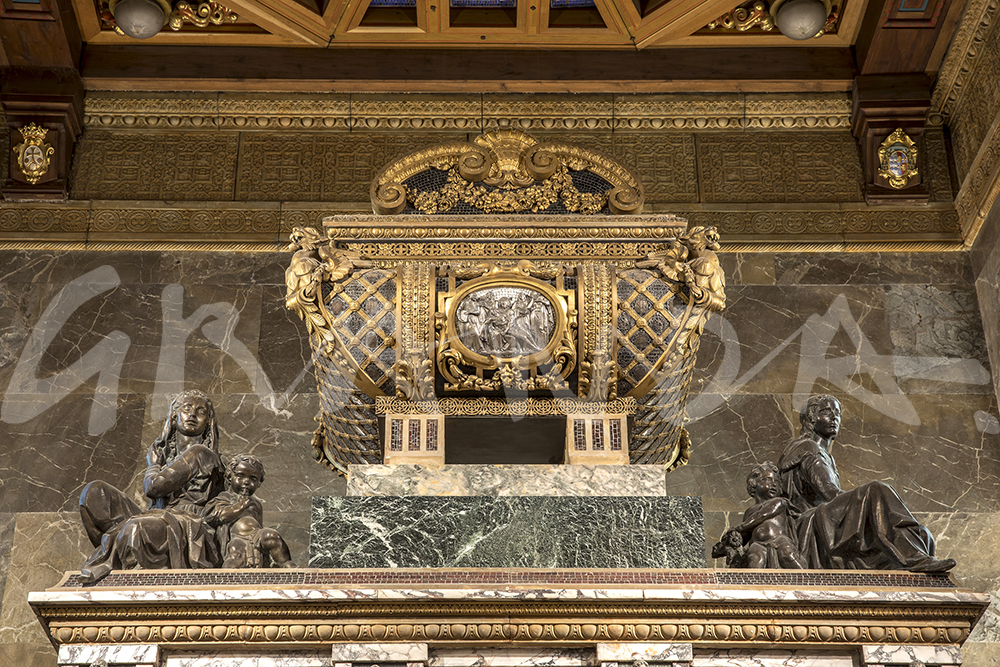
Communion with Jesus, the path by which the saint was transfigured, is revealed in the reliefs of the main body, with scenes of the reform of Carmel, of the saint's miracles and of his death. In harmony with the central message, the reliefs of the predella are all prefigurative of the sacrifice of the Cross, which, together with the altar, speak to us of the sacrifice of the Mass. Thus, in the back predella we observe the holy burial of Christ in the center and, on the sides, two different moments of the sacrifice of the lamb according to the Old Law. In the front predella, two scenes with the themes of the metal Serpent and Moses making water flow from the rock flank the tabernacle. Its door is ornamented with the sacrifice of Melchizedek in the center, surrounded by other iconographic elements of complex interpretation, but which may represent two of the four horsemen of the Apocalypse, Jonah being devoured by the giant fish and Eve. In parallel and according to the chronicle of the time, it seems that the scenes as a whole are a representation of the four elements - fire, earth, water and air - which would be represented respectively in the sacrificial pyre, two snakes hanging over the figure that could be Eve, the great fish and two birds accompanying the horsemen.
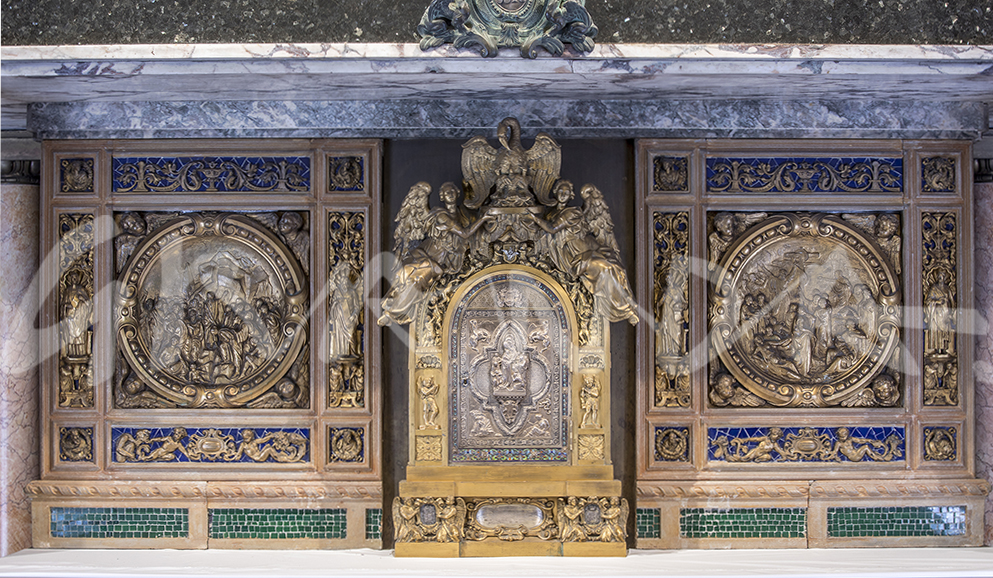
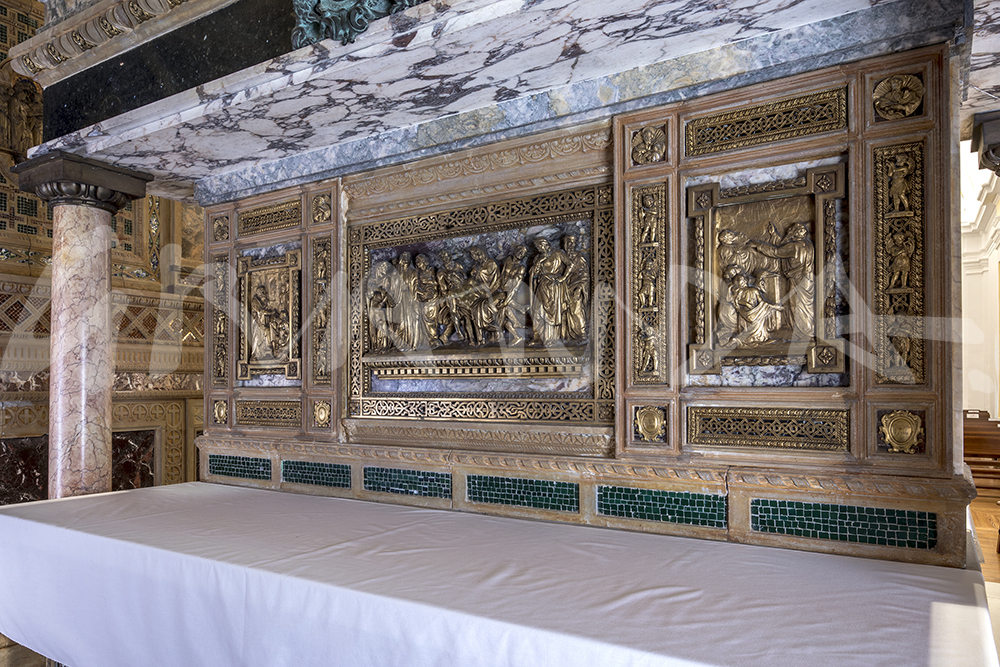
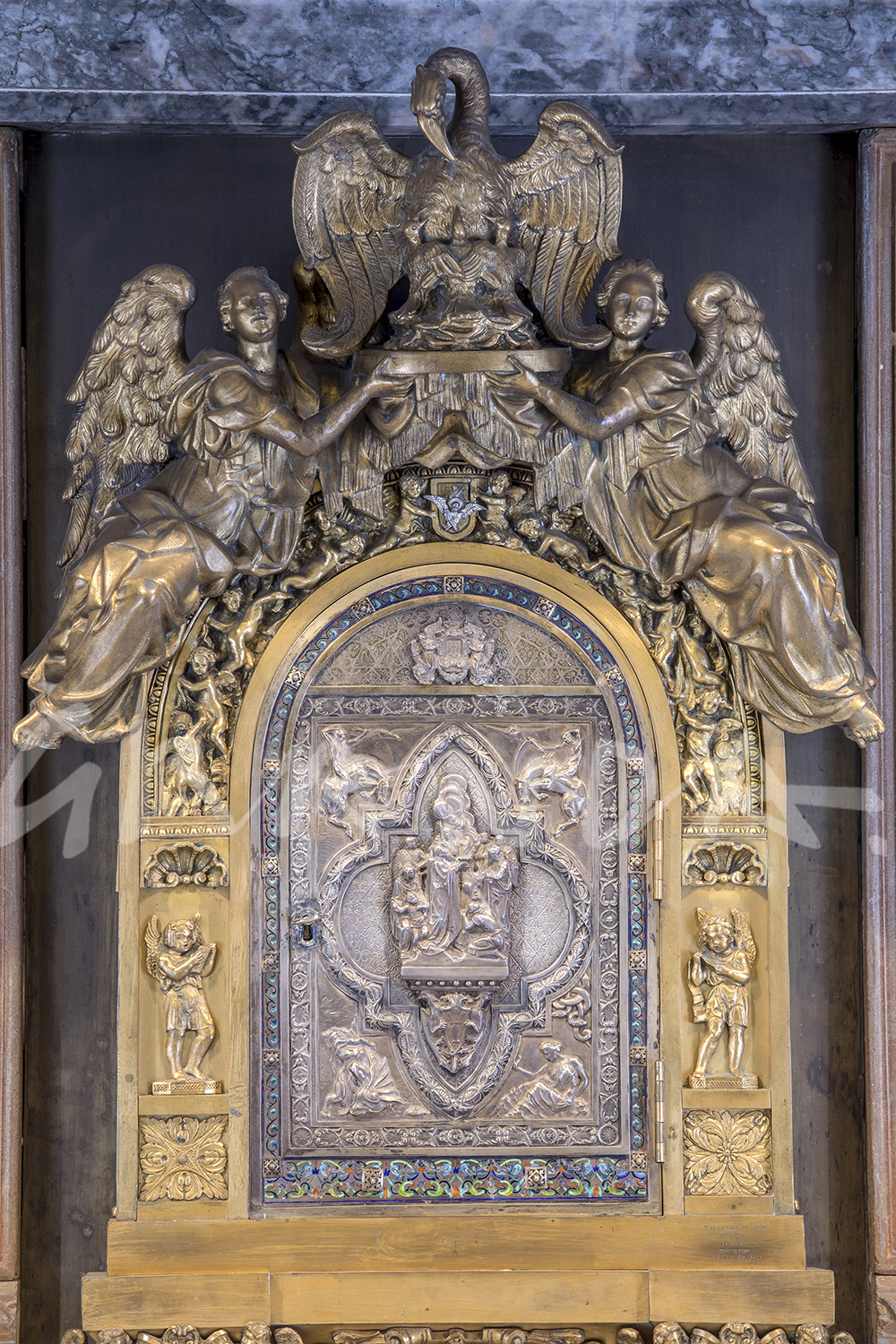
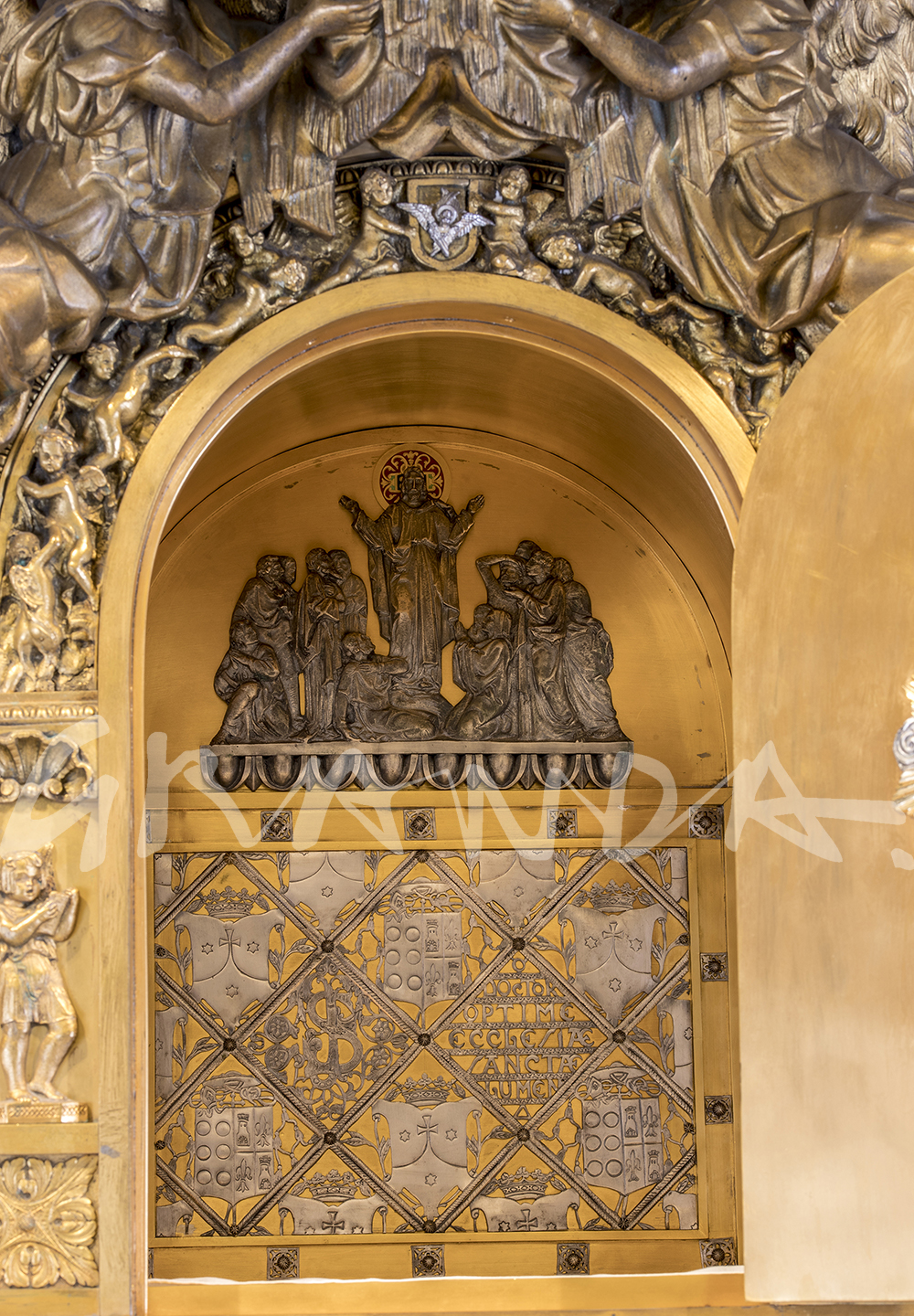
The floor is of white marble, except for the area surrounding the altars, which is of black marble. The facing is dressed with a plinth with red marble boards on which there is a second body that, in each of its canvases, divided by marble slabs and mosaic inlays, presents two niches with a quarter vault. They have their bottom decorated with intense blue mosaic, on which six figures of saints of the Carmelite Order are cut out. Their flesh tones have not been polychromed, but they show the wood in its color, wrapped in their golden and stewed mantles, which adds sobriety to their mystical expressions and reveals their good sculptural workmanship. These models made by our Workshops, in fact, were so successful that, since then, their copy has been requested for numerous Carmelite churches all over the world. They represent the founders, the reformers and two examples of holiness of the Carmelite Order. They are St. Elias, venerated as founder of the Order, St. Therese of the Child Jesus, St. John of the Cross, St. Teresa of Jesus, St. Mary Magdalene of Pazzis and St. Albert of Vercelli, who brought the first rules of the Order. Among the sculptures, on a mosaic panel there are three gilded bronze reliefs with scenes from Carmelite history. Above this body, the facing is covered with gray marble up to the ceiling, with four bronze seraphs with wings spread out that seem to contemplate and guard the body of the saint, and topped with a large frieze of just over a meter, with lacerations with the emblems of Castile and Leon.
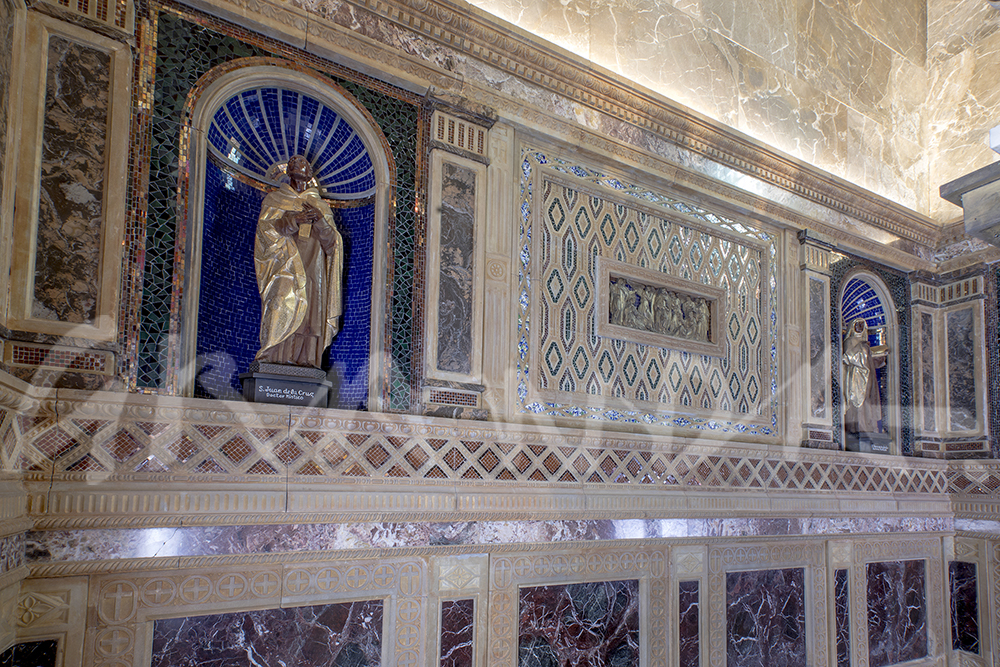
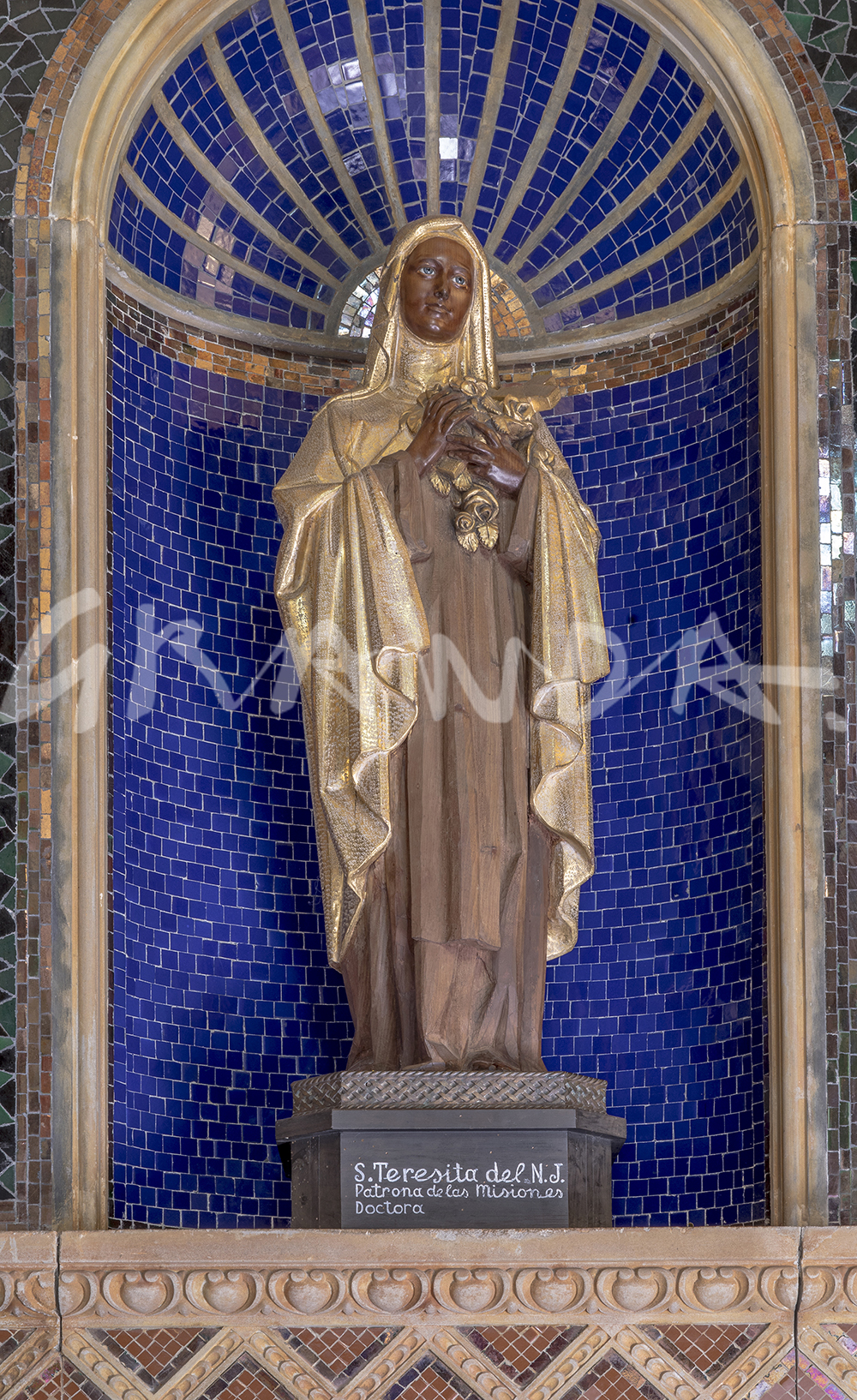
A vault covered with a coffered ceiling of wood and blue mosaic and geometric form tops the dressing room. At its ends there are corbels with the coats of arms of the prelate Monsignor de Castro, of the Order of Carmen and of Segovia, as well as four electric globes. According to the original idea of Don Félix Granda, from this vault a votive crown inspired by those of the treasure of Guarrazar was to be hung over the tomb of the saint, which, however, was never realized.
On December 11, 1927, the body of St. John of the Cross was placed with great solemnity in his new tomb. For this, it was placed in the simple trunk in which, for the first time, his remains were transferred in 1593 from Úbeda to Segovia.
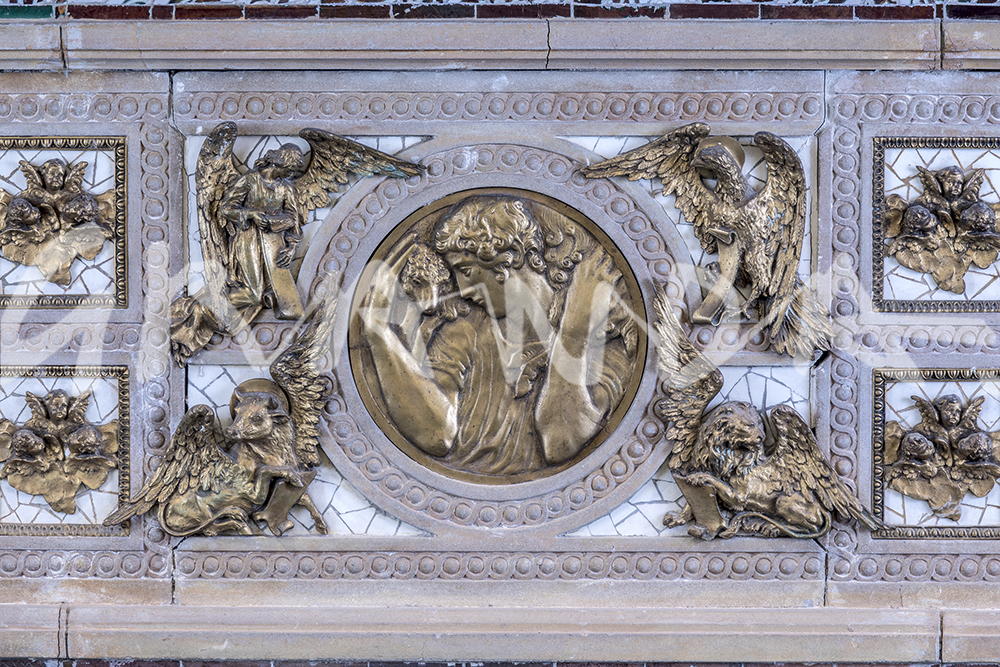
Bibliography:
Photographs: Calixto Berrocal (Treseñes) for Talleres de Arte GRANDA.
